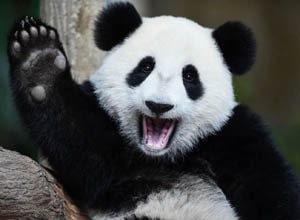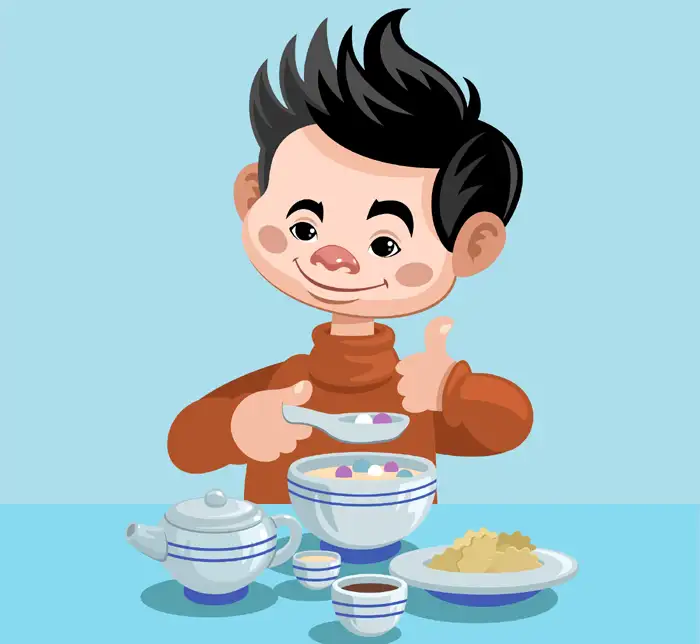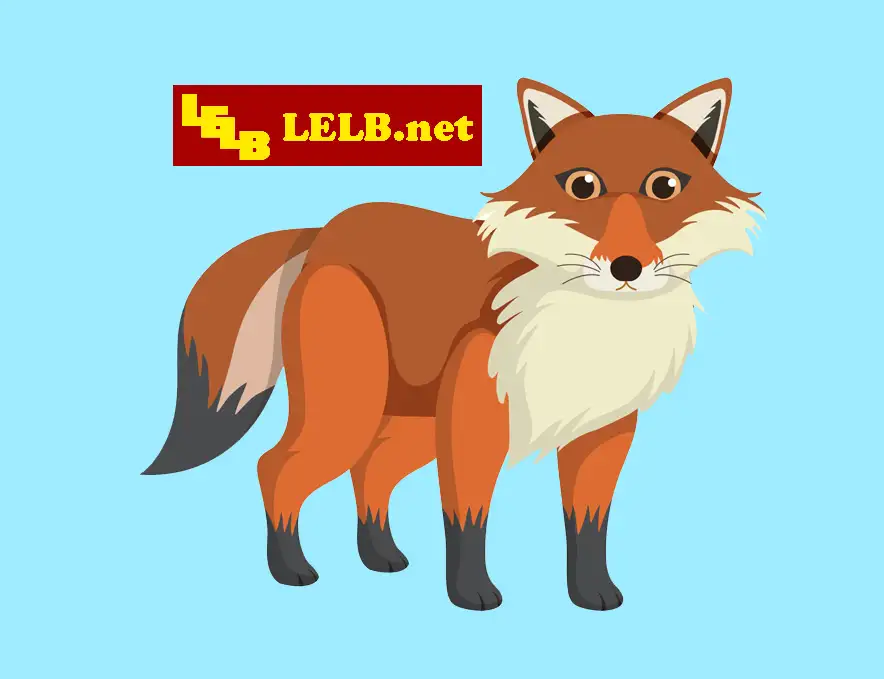English Documentary on Giant Pandas with Transcript with a podcast or embedded video to practice listening, and illustrated flashcards inside the lesson to improve your vocabulary
Source of documentary: National Geographic YouTube Channel
Giant pandas
If there’s one animal that lives up to the saying “you are what you eat”, it’s probably the giant panda. Nearly every aspect of a panda’s life revolves around bamboo.
Giant pandas eat and eat and eat. Pandas can spend more than half of each day eating. To understand why pandas eat so much, you need to look more closely at what they eat. Bamboo, a giant woody grass, is a very poor nutritional source, low in protein and high in fiber, that pandas can’t digest well. Yet bamboo comprises 99% of a panda’s diet. To compensate, pandas need to eat 20 to 40 pounds a day.
Digestive system owned by carnivores
Pandas have quite a bit in common with carnivores. A panda’s digestive system is more closely related to that of a carnivore than an herbivore, which explains why they don’t digest plants very well. Fortunately, they have other adaptations that help them chow down on bamboo stalks, including large powerful jaws.
Giant poop machines
When they’re not eating, pandas rest and rest, and poop and poop. Since they don’t digest bamboo very well, pandas end up passing a lot of it as waste, which unsurprisingly contains a lot of undigested bamboo bits. Pandas defecate more than 100 times a day, producing more than 40 pounds of waste. Pandas even go number two while they’re napping, and they spend a lot of time napping as a way to compensate for their low energy diet.
Tiny panda cubs
Pandas have tiny cubs because of their poor diet. Baby giant pandas are born blind, helpless and tiny, weighing just five ounces or about one thousandth the size of their mom. Of all placental mammals, panda cubs are the tiniest in comparison to their mother. Why so small? The mother’s diet plays a role. Due to her low metabolism, a panda mother has a relatively low blood oxygen level, so the cub can get more oxygen outside the womb.
Camouflage ability
Pandas’ black and white fur may help them camouflage. Once again, we can look at a panda’s diet to help understand why its fur is the color it is. Pandas don’t store enough fat to hibernate like other bears, so they have to keep eating bamboo all year round. And since they’re always roaming in search of bamboo, pandas are unable to shed their fur quickly enough to match their background, like other animals can; so their black and white pattern may be sort of a compromise.
White fur allows them to blend into snowy backgrounds; black fur allows them to blend into shady forest backgrounds. Historically, pandas inhabited a much wider range than they do today, and faced multiple predators, so at the time, they may have relied more on their camouflage ability.
Giant pandas are vulnerable
Today, pandas are not at as high risk from predators, but rather from a loss of bamboo. The good news is that the giant pandas’ conservation status was recently upgraded from endangered to vulnerable. An estimated 1850 pandas remain in the wild in China, an increase of 17% over the past decade.
However, pandas still face significant threats, tied closely to their food source. Human development has driven pandas into isolated fragmented mountain regions, restricting their access to bamboo. Additionally, climate change threatens to eliminate more than a third of the bamboo habitat that pandas rely on, by the end of the century.




I actually like pandas very much . They are from nature and are so cute. That favorite food is bamboo.
Yes, as you said, they’re cute and adorable. However, pandas are in danger because their habitat and food, i.e. bamboo trees, are relatively scarce these days.
Although pandas are one of my favorite animals, there are so many facts about them that I wasn’t aware of.
That’s right. They need a lot of care and attention, and that’s why they’re a bit of a handful for those who plan to keep and preserve them.
Giant pandas
If there’s one animal that lives up to the saying “you are what you eat”, it’s probably the giant panda. Nearly every aspect of a panda’s life revolves around bamboo. Giant pandas eat and eat and eat. Pandas can spend more than half of each day eating. To understand why pandas eat so much, you need to look more closely at what they eat. Bamboo, a giant woody grass, is a very poor nutritional source, low in protein and high in fiber, that pandas can’t digest well. Yet bamboo comprises 99% of a panda’s diet. To compensate, pandas need to eat 20 to 40 pounds a day.
Carnivorous digestive system
Pandas have quite a bit in common with carnivores. A panda’s digestive system is more closely related to that of a carnivore than an herbivore, which explains why they don’t digest plants very well. Fortunately, they have other adaptations that help them chow down on bamboo stalks, including large powerful jaws.
Giant poop machines
When they’re not eating, pandas rest and rest, and poop and poop. Since they don’t digest bamboo very well, pandas end up passing a lot of it as waste, which unsurprisingly contains a lot of undigested bamboo bits. Pandas defecate more than 100 times a day, producing more than 40 pounds of waste. Pandas even go number two while they’re napping, and they spend a lot of time napping as a way to compensate for their low energy diet.
Tiny panda cubs
Pandas have tiny cubs because of their poor diet. Baby giant pandas are born blind, helpless and tiny, weighing just five ounces or about one thousandth the size of their mom. Of all placental mammals, panda cubs are the tiniest in comparison to their mother. Why so small? The mother’s diet plays a role. Due to her low metabolism, a panda mother has a relatively low blood oxygen level, so the cub can get more oxygen outside the womb.
Camouflage ability
Pandas’ black and white fur may help them camouflage. Once again, we can look at a panda’s diet to help understand why its fur is the color it is. Pandas don’t store enough fat to hibernate like other bears, so they have to keep eating bamboo all year round. And since they’re always roaming in search of bamboo, pandas are unable to shed their fur quickly enough to match their background, like other animals can; so their black and white pattern may be sort of a compromise. White fur allows them to blend into snowy backgrounds, black fur allows them to blend into shady forest backgrounds. Historically, pandas inhabited a much wider range than they do today, and faced multiple predators, so at the time, they may have relied more on their camouflage ability. Today, pandas are not at as high risk from predators, but rather from a loss of bamboo. The good news is that the giant pandas’ conservation status was recently upgraded from endangered to vulnerable. An estimated 1850 pandas remain in the wild in China, an increase of 17% over the past decade. However, pandas still face significant threats, tied closely to their food source. Human development has driven pandas into isolated fragmented mountain regions, restricting their access to bamboo. Additionally, climate changes threaten to eliminate more than a third of the bamboo habitat that pandas rely on, by the end of the century.
Thank you so much for your decent job!
My feedback:
* We have carnivorous animals, species, plants, yet I’ve not seen carnivorous collocating with ‘digestive system’. That’s why I changed the heading.
* At the end of the transcript: climate changes threaten to –> climate change threatens to … I double-checked it to make sure.
Thanks again!